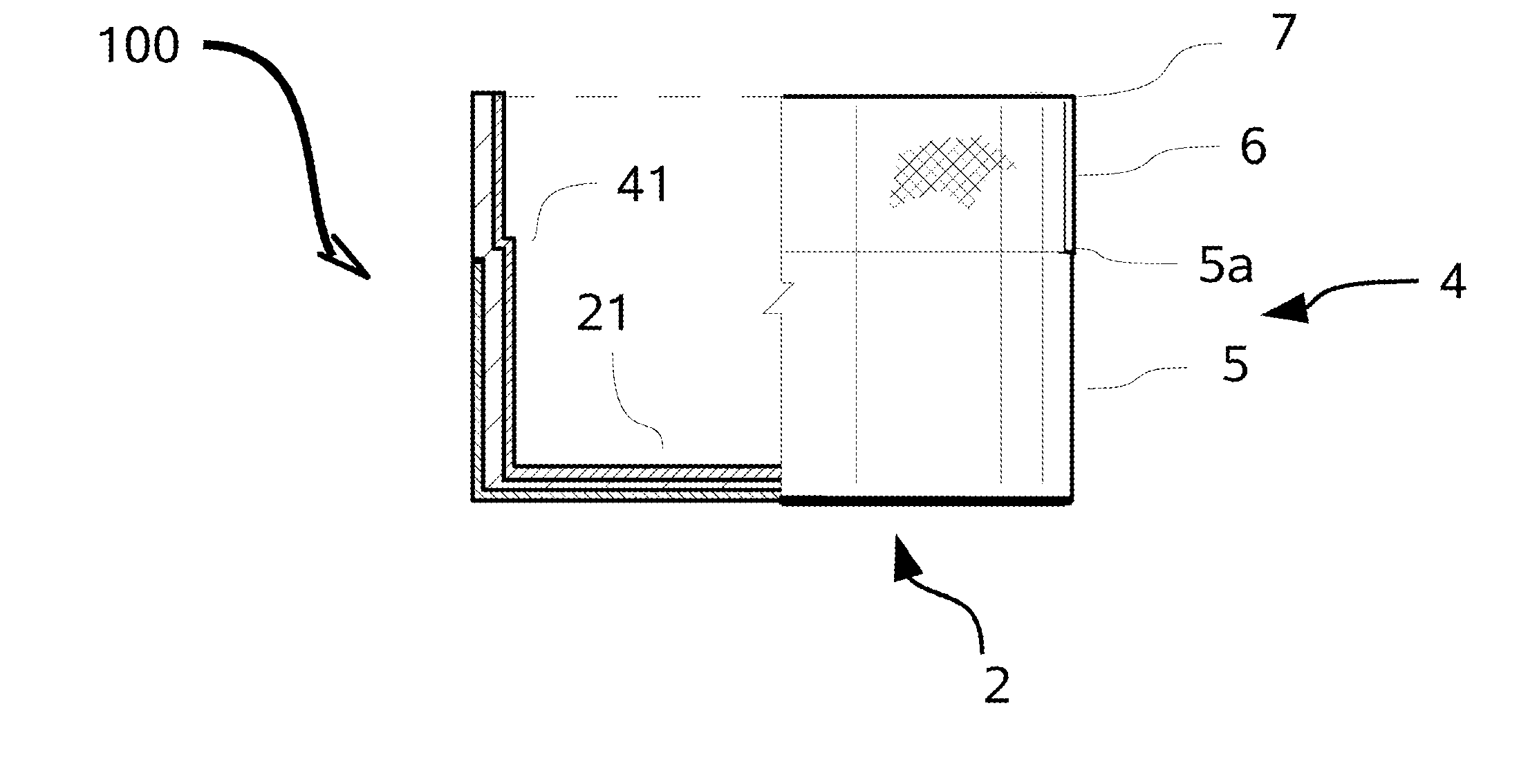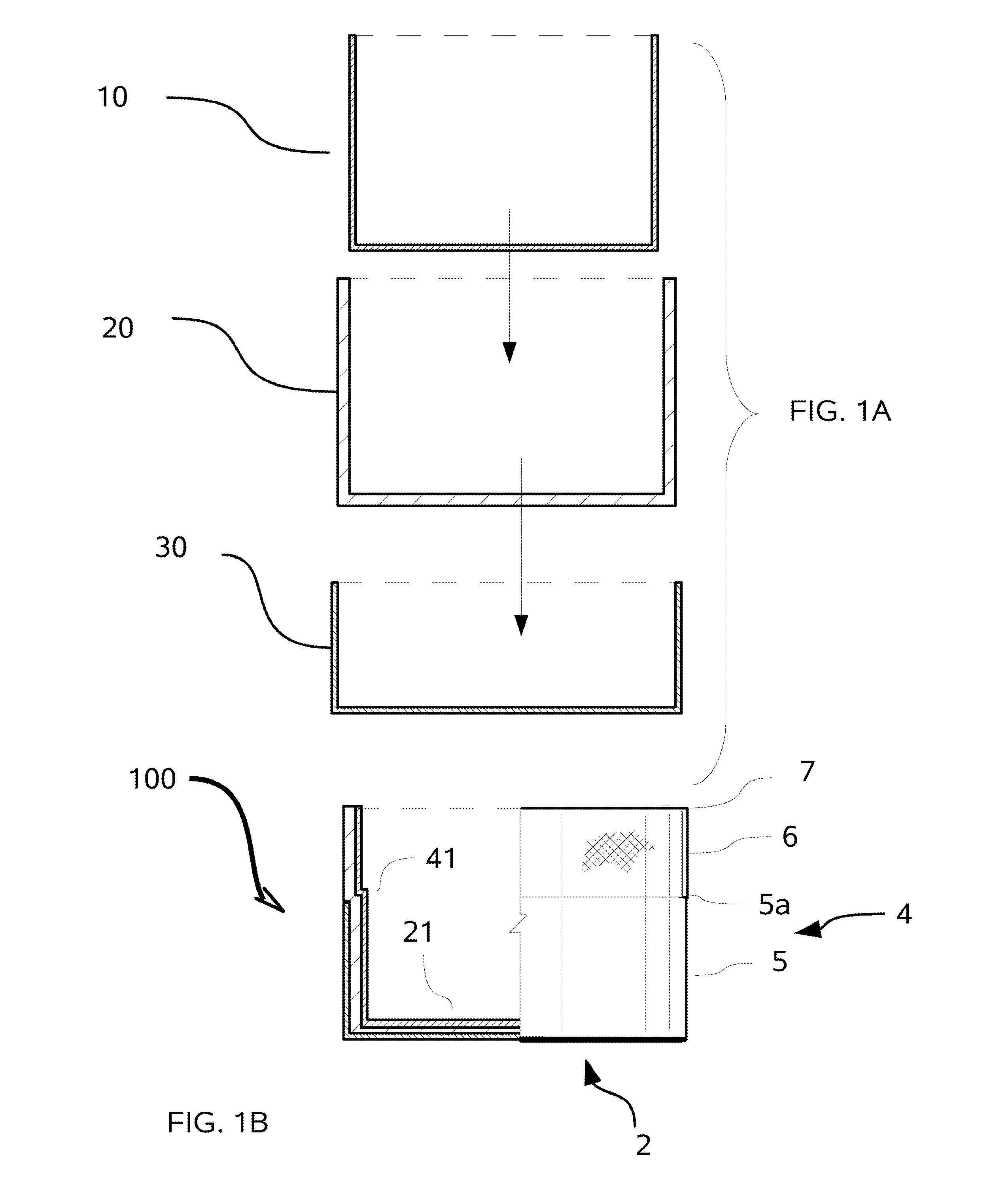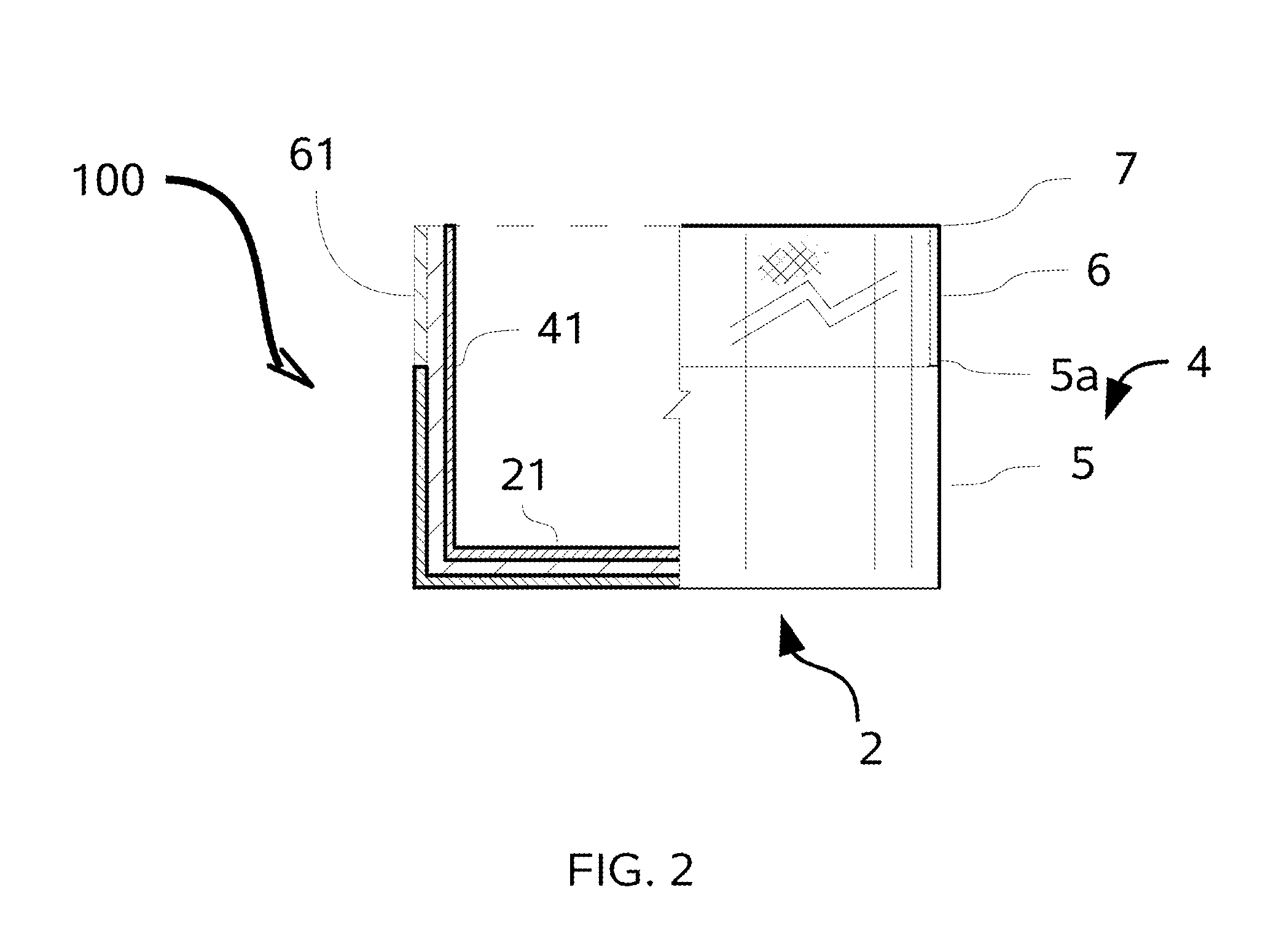Cookware with Tarnish Protected Exterior
a technology of cookware and exterior, applied in the field of cookware articles, can solve the problems of easy tarnishing of cookware on exposure to heat, inconvenient fabrication of cookware, and inability to prevent tarnishing, so as to achieve a simple and low-cost fabrication method
- Summary
- Abstract
- Description
- Claims
- Application Information
AI Technical Summary
Benefits of technology
Problems solved by technology
Method used
Image
Examples
Embodiment Construction
[0018]Referring to FIGS. 1 through 3, wherein like reference numerals refer to like components in the various views, there is illustrated therein a new and improved article of cookware with a copper exterior, generally denominated 100 herein.
[0019]In accordance with the present invention, FIG. 1B illustrates a cookware vessel 100 having a bottom generally denoted by numeral 2, and substantially upright and surrounding sidewalls 4 connected to the bottom 2 to form a fluid containing vessel. The surrounding sidewall has a lower portion 5 connected to the bottom 2 and an upper portion 6 that is at least externally visible as extending upward from the edge 5a of lower portion 5 to the vessel rim 7. The visible upper portion of the external wall 6 is preferably copper or an alloy thereof. In contrast, the externally exposed lower portion 5 is preferably stainless steel, or another material that unlike copper, is not susceptible to tarnishing when exposed to high temperatures. By visibly ...
PUM
 Login to View More
Login to View More Abstract
Description
Claims
Application Information
 Login to View More
Login to View More - R&D
- Intellectual Property
- Life Sciences
- Materials
- Tech Scout
- Unparalleled Data Quality
- Higher Quality Content
- 60% Fewer Hallucinations
Browse by: Latest US Patents, China's latest patents, Technical Efficacy Thesaurus, Application Domain, Technology Topic, Popular Technical Reports.
© 2025 PatSnap. All rights reserved.Legal|Privacy policy|Modern Slavery Act Transparency Statement|Sitemap|About US| Contact US: help@patsnap.com



